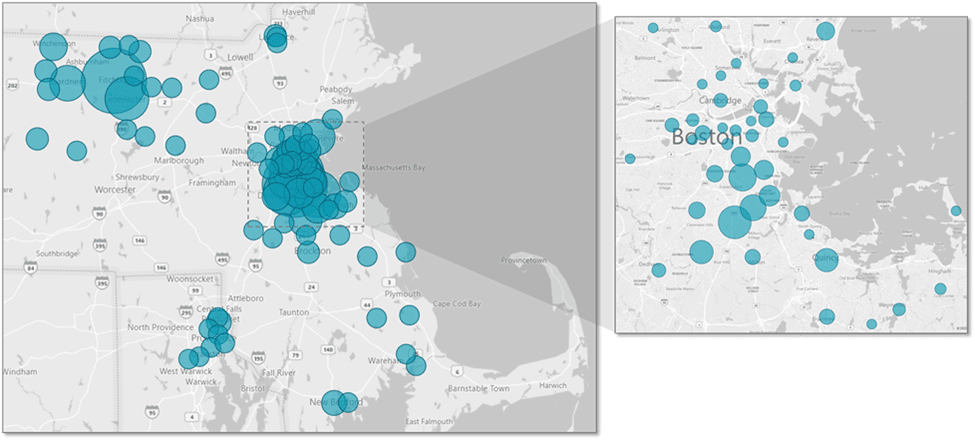

Public Sector Solutions, Workforce & Economic Mobility, Data Solutions
Key Takeaway
Using data infrastructure developed by Social Finance, WORK Inc. is able to better understand its clients’ journeys and use this data to guide program adjustments.
WORK Inc., a Boston-based nonprofit, has been supporting meaningful work opportunities for individuals with disabilities for over 50 years, reaching more than 1,000 people annually. President Jim Cassetta knew in his bones that his organization helps transform lives. The data just wasn’t always connected to reveal the full story and scope of the organization’s impact.
To strengthen its capacity for data-driven decision making, WORK Inc. has partnered with Social Finance since 2019 to develop the data infrastructure needed to better understand its clients’ journeys and use this data to guide program adjustments. “[Thanks to] the work we are doing with Social Finance, we have been able to ‘raise the bar’ on data entry and data use to ensure critical data is accurate and up-to-date,” said Cassetta.
The first step was building out a new data system and aligning on the data fields to collect from WORK Inc.’s clients. By partnering with a third-party IT vendor, Social Finance integrated quality checks to ensure that the data was consistent, timely, and clear. Together, the three organizations identified the main demographic categories to include as response options and ensured that data collection dates were included for inputs that could change over time, such as employment and income.
But collecting high-quality data is just the beginning. The real benefit comes from analyzing and learning from that data. The Social Finance team produced actionable analyses on data quality, client characteristics, and workforce outcomes to inform broader programmatic opportunities. Social Finance helped WORK Inc. identify how each of its programs was serving different types of clients and the range of outcomes for those clients. For instance, Social Finance created a bubble map of recent client locations to visualize the concentration of clients located in Boston, Fitchburg, and Providence, as well as emerging client centers in Lawrence, New Bedford, and Wareham (see Figure 1). These results will inform future WORK Inc. staffing and programming decisions.
Figure 1: WORK Inc. Client Service Area

WORK Inc. was particularly interested in understanding the value its programs create at both the individual and system levels. To achieve this, Social Finance conducted a cost-benefit analysis to identify the individual value that WORK Inc. generates (by clients obtaining meaningful paid work, job retention, and wage growth) and the value to the larger society (through an increase in tax revenue, a decrease in need for public benefits, and reduced utilization of public health insurance).
Now that WORK Inc. has a better understanding of the benefits of its programs and the data infrastructure in place to track results, the team is well-positioned to expand effective programming with a culture of data-driven performance management. “This has all come at a perfect time, as we are making final additions to our next five-year strategic plan, incorporating new data and developing new employment dashboards and monthly data snapshots to manage outcomes and progress,” said Cassetta.
Photo courtesy of WORK Inc.
Related Insight

3 Key Lessons for Practitioners Using Data to Improve Social Outcomes
Social Finance partnered with Interface and Ventura County to establish Ventura County Project to Support Reentry, a pay for success program that has already enrolled over 340 individuals into reentry services at Interface.